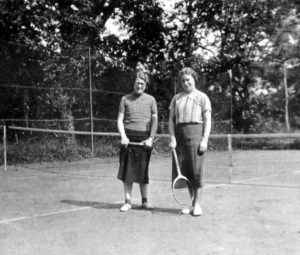(From the Diary of John Norris Thompson)

Built 1835.
Took Bridge Cottage 1873 at the valuation of Robin Moore, £35 – made it £36.
1854: Bridge Cottage was then in a very dilapidated condition though the house had not been 20 years built. Tubs were placed in the rooms to catch the drops from the roof and when the slates were partly removed for repairs the timber was found to be commencing to rot. My uncle, Sam Rankin, had got 5000 inches of glass to repair the windows before we came. The kitchen hearth was so broken up that the ash pit extended a couple of feet beyond the line of the grate into the floor and was used as a receptacle for general refuse. The rats ran in scores over the pantry shelves. The sink drain was built and of course was always foul.

There was no drain from the cowhouse which was in the inside yard and when the cowhouse was being cleaned the smell penetrated to the dwelling house. The manure pit was from beside the yard gate to near the scullery and in spring, half filled the yard. There was a ruinous pigsty where the office now stands. Two thatched office houses used as potato stores occupied most of the space between the north gable of the dwelling house and the road. A shed roofed with a small turf stack occupied the ground of what is now the little stable. A sheep yard occupied the space between one of the thatched houses and the low wall which separated the yard from the grove which then extended from the low wall all the road to the avenue and the space in front of the cottage.
There were no buildings where the boiling house, cowhouse, stable and coach house now are. The barn was the present lumber room and the coach house was where the boy’s bedroom is now. The stable was where the other bedroom is and there was no connecting passage from the dwelling house – the cowhouse was where the potato store is now and had a shed roof.
Oct., 1863: My mother built the boiling house at a cost of £20. Paddy Owney was the contractor. A good many things were done to the house in 1865.
We got the metal balls on the pillars of the gate in January, 1871.
1878: old coach house changed to boys’ bedroom so all our servants now slept outside.
Got a new hall door 1877
1883: In March I commenced to build a new shed where the old shed topped with turf near the road had stood and to raise the wall from the office to the front gate. I then in building made the shed a house with stalls for horses and going on in the Summer I built a cowhouse and stable and raised the old cowhouse and made a loft above it and pulled down the thatched, ill-built coach house and built a new one, made a passage behind the house and changed the barn into a store room and the old stable into a servant’s bedroom and put a W.C. over the scullery.
All this led me into greater cost than I had anticipated and when all was done and the money (£360) gone I regretted much that I had not been content to let the house remain as it had been. I also made a greenhouse.


Maura, great post, makes very interesting readimg.